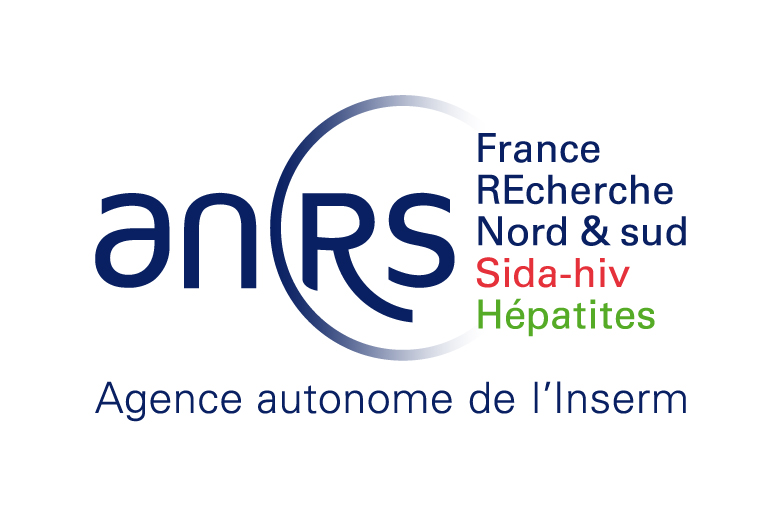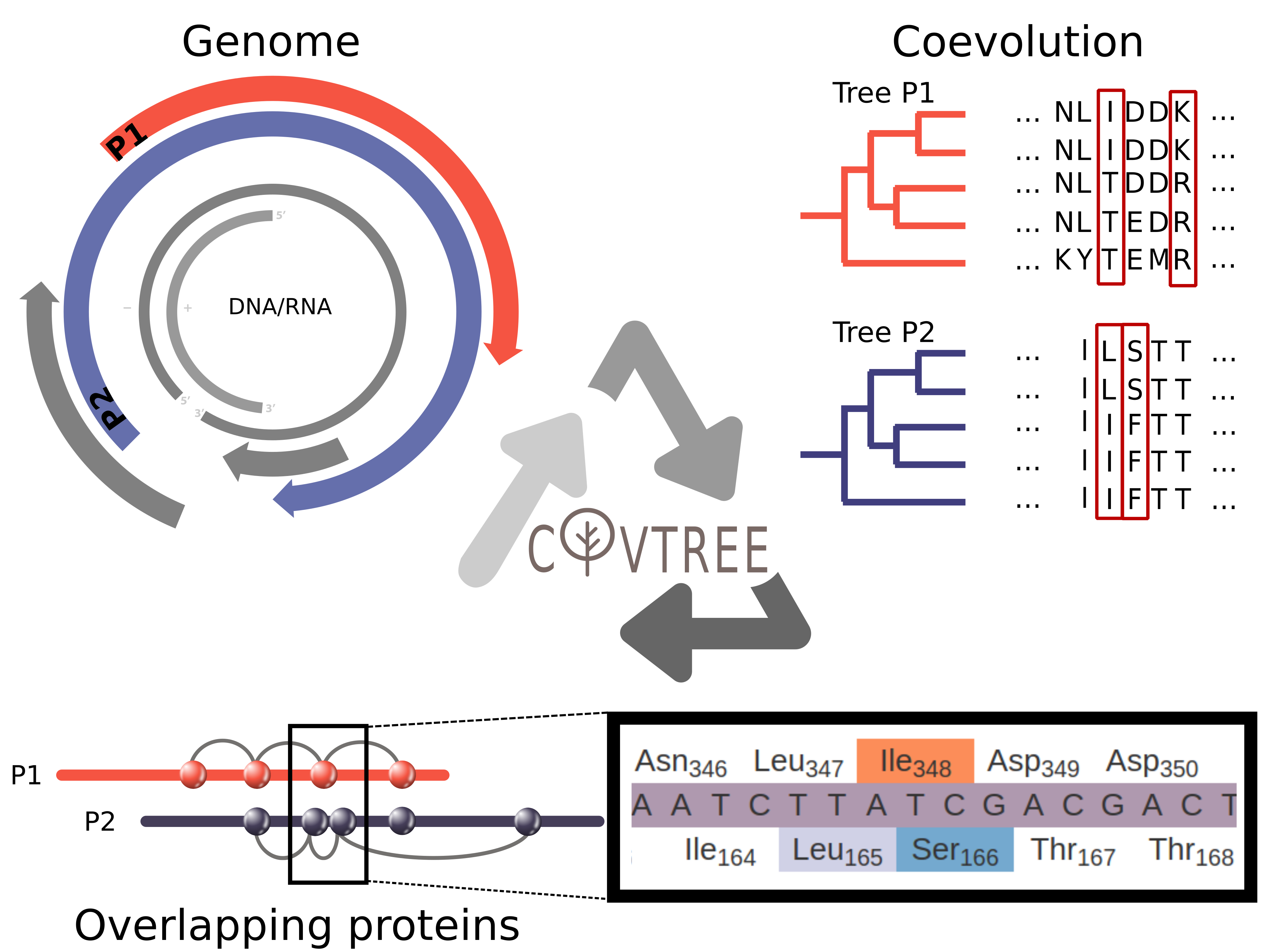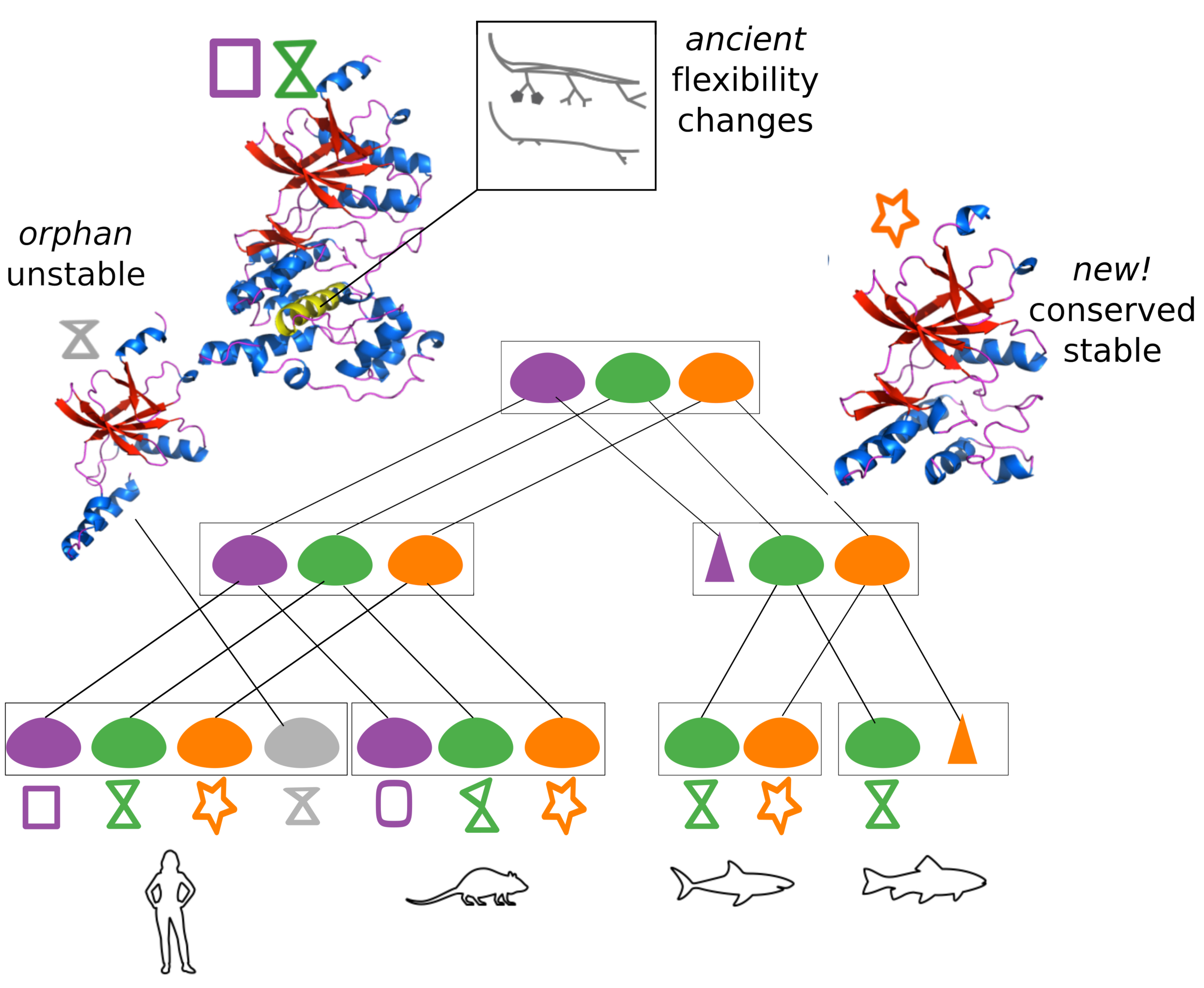The new book "Mathematical modelling of evolution. One-locus and multi-locus theory and recombination" by Igor Rouzine appeared in the Mathematical and Life Science Series of De Gruyter. Chp 1. Thought experiments based on a basic model of stochastic evolution of a single genomic site, with random mutation, directional natural selection, and random genetic drift. Chp 2. more advanced theory for a large number of linked loci. Chp 3. Genetic recombination and advantage of sexual reproduction for adaptation.
These models are directly applicable to both asexual and sexual populations, including virus populations in an animal host and a population of hosts.
Link to the book
Link to the book series
|
|
|
|
|
Overlapping genes are commonplace in viruses and play an important role in their function and evolution. Coevolution in OVerlapped sequences by Tree analysis (COVTree) is a web server providing the online analysis of coevolving amino-acid pairs in overlapping genes, where residues might be located inside or outside the overlapping region.
Link to the article
|
We propose PhyloSofS, the first automated tool to reconstruct plausible evolutionary scenarios explaining a set of observed transcripts, and to generate 3D molecular models of the protein isoforms. We apply it to the JNK family (60 transcripts, 7 trees) to identify AS events of ancient origin and relate their functional outcome with changes in the protein dynamics. We also show that PhyloSofS can help identify new potential therapeutic targets.
Link to the paper
|
A.Carbone and F.Oteri work on the Spike protein of SARS2 in collaboration with the group of F.L.Cosset at CIRI in Lyon, expert in non-replicative retroviral pseudoparticles. Based on coevolution analysis of patient sequences and sequences from bats and other species, they aim at identifying key residues in the Spike protein involved in the entry mechanism of the virus in human cells. In the past, the two groups successfully combined their computational and experimental methods to unravel critical features of the original HCV fusion mechanism.
|
The team "Statistical Genomics and Biological Physics" has obtained financial support by the Faculty of Sciences and Engineering of Sorbonne Université, to develop sequence-data driven models of evolutionary landscapes and selective constraints acting in the Covid-19 causing virus SARS-CoV-2. The projects aims at finding signatures of selection in the rapidly increasing number of available
genomes, and to interpret them in terms of protein structure, function and protein-protein interactions inside coronaviruses and with the host (e.g. the famous interaction of the viral spike protein with the human ACE2 receptor).
|
The "Emergence program" promoted by the "Ville de Paris" is awarded to projects encouraging the creation and the development of new research teams in the Paris region.
Zhou Xu received one of these recognitions for 2019.
|
Nonribosomal peptide synthetases (NRPSs) are microbial megaenzymes that make a wide variety of small-molecule products, including many that are clinically used as antitumors, antibiotics, or immunosuppressants. Peptide synthesis proceeds with assembly-line logic, where each station on the NRPS assembly line is a multidomain unit called a module. While the function of single modules is well studied, much less is known how they work together. Researchers from the Schmeing lab at McGill University have resolved several dimodular NRPS structures, which show coordinated interactions between modules, and large conformational changes between catalytically relevant states. Martin Weigt from the “Statstical Genomics and Biological Physics” team has performed complementary coevolutionary analyses using the direct coupling analysis (DCA), which confirm the biological relevance and evolutionary conservation of the observed inter-modular interactions. DCA analysis has also allowed to suggest mutations in a module-swapped chimeric NRPS protein, which significantly increased the activity of the protein, a result of direct relevance toward the longstanding goal of NRPS bioengineering for production of new-to-nature bioactive small molecules.
Link to article in Science
|
|
|














